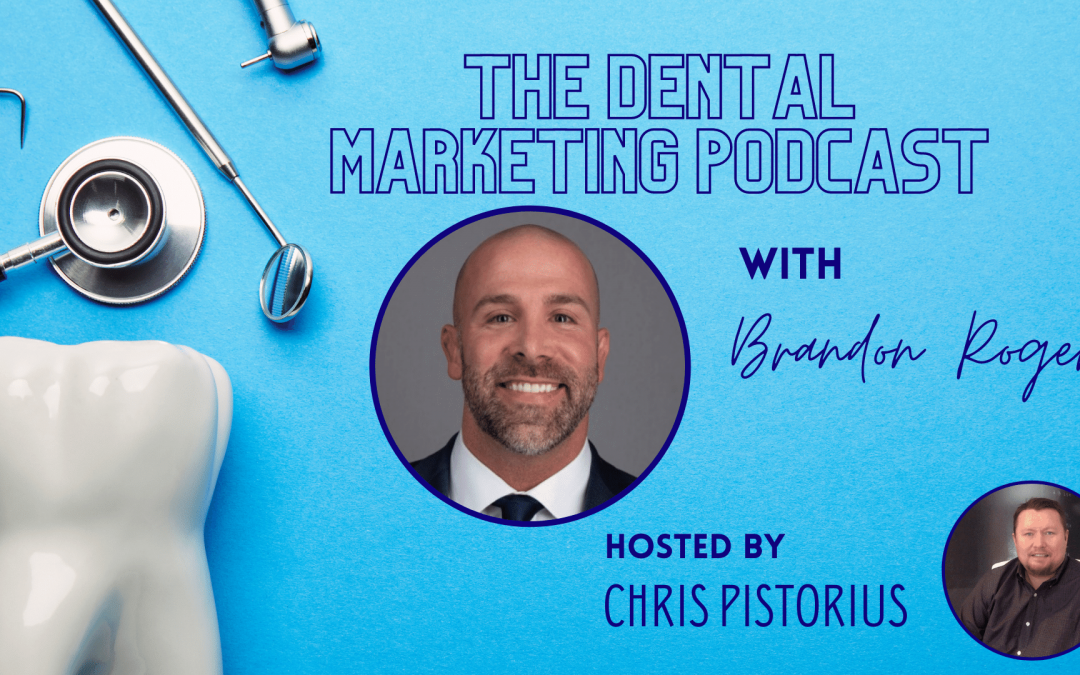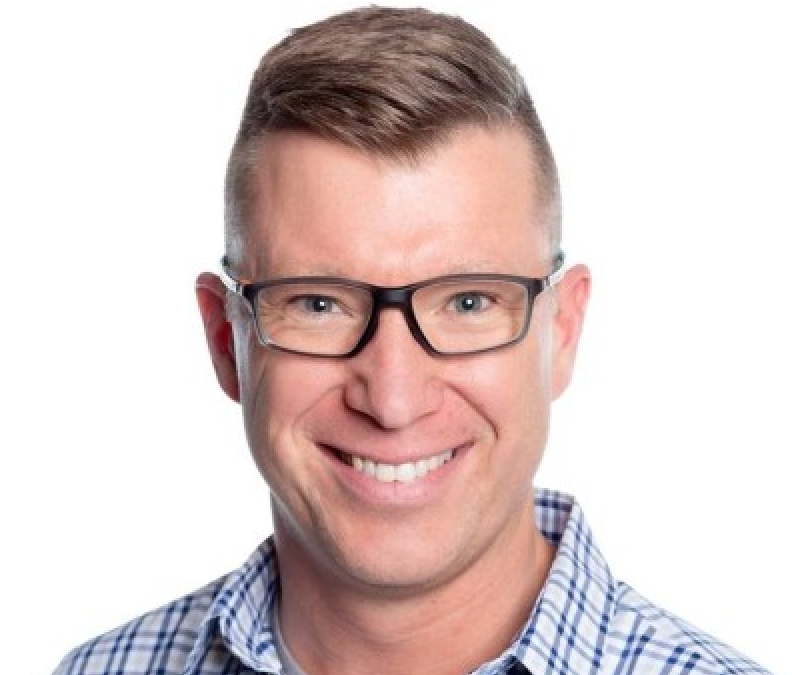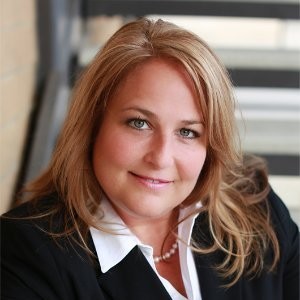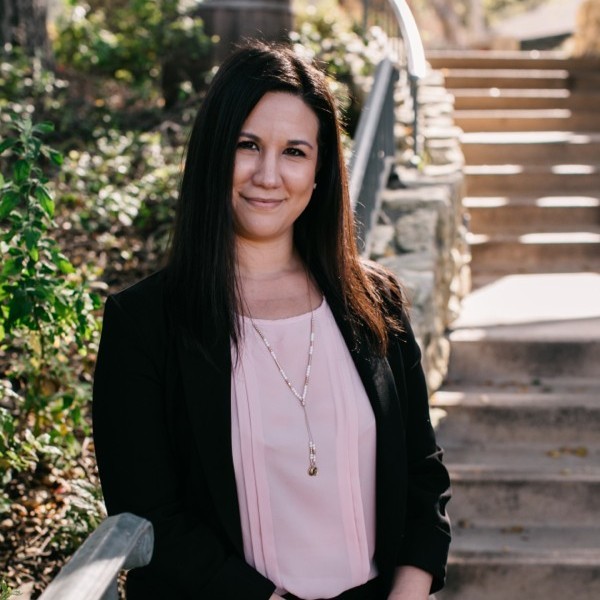
Tips From A Dental Consultant On Increasing Case Acceptance
With more than 20 years of experience in his field, Eric takes us through his methods on increasing case acceptance in practices and how he helps dentists move away from insurances.
You won’t want to miss this episode!
View Full Transcript
Chris Pistorius (00:04):
Hi everyone. This is Chris Pistorius, again, with the Dental & Orthodontic Marketing Podcast here for another great episode this week. Today, we’ve got Eric Vickery of Vickery Coaching. Eric has worked with over 250 dental practices throughout the country and just coaching, helping out with a multitude of things, but one of his specialties is case acceptance. Once you present a need to the patient on what your recommendations are in terms of what type of service and treatment they should get, how do we get more of those people to say yes and come back for that? So, Eric, thanks so much for being on the show today.
Eric Vickery (00:47):
It’s great, Chris. I’m so thankful that I get to be on here and talk to you about case acceptance. This is great.
Chris Pistorius (00:53):
Yeah. Well, I know it’s a big need in the market. We have clients all the time. Our job as a marketing company is to bring in new patients, new cases for our clients. Then once we bring them in there, there’re some things that we can do to help, but that’s always that next step. We’ve got them in there. We recommend treatment. How do we get more of those people to raise their hand and say, “Yeah. Let’s go for that.” That’s something that you specialize in, right?
Eric Vickery (01:21):
Yeah. It’s funny that you say raise your hand. I do a two day seminar on case acceptance and at the beginning, I’ll say, “All right, raise your hand. Who likes to sell? Who likes selling dentistry?” There’ll be one or two administrative people in the room that will raise their hand, and by the end of the two days, I do that same thing again and they raise their hand. Here’s the thing, selling is a bad word. It’s an S word. Sell, it’s a four-letter S word and we can disguise it however we want. We can call it case acceptance, case presentation, what have you. But at end of the day, we’re exchanging information to the patient. They’re buying something from us. We’re exchanging a service for financial profit, and hopefully we’re doing it in a profitable way.So what we don’t like about the S word, sell, is that people feel pressured.
Eric Vickery (02:10):
They feel like, “I don’t want to be someone who’s a pressure salesman.” They don’t want to get into that mode. So what I train offices on for the last 20 years is how to sell in a way that there’s no pressure. In fact, we call it mutual agreement. They feel they got good advice from somebody they trust. Closing has this negative connotation to it, just pressure and understanding how to do that in a way that is comfortable for you as the dental team member, the doctor, or for the patient. Nobody in either side of that feels they’re being pressured into something. In fact, to me, this is what pressure sales sounds like and I hear this all the time. Quote, “You need a crown. Go up front and see Jenny and she’ll get you scheduled. Have any questions for me? Nope. All right. You’re all set. We’ll see you for your next visit.”
Eric Vickery (03:03):
That’s it. To me that is telling someone what they need to do. When you’re pushing and you’re telling someone, that’d be like you saying, “Hey, you need to upgrade your website.” “No, I don’t want to have one.” You don’t ever approach someone that way. You approach someone with some real basis, and we want to transition from telling people what they need to provide them with something that they want. They’re not there on accident. We just need to do more investigating and work on our soft skills to figure out what it is that’s really driving them… their butt sitting in your seat right now.
Chris Pistorius (03:33):
Yeah, yeah. Totally agree. I tell dentists all the time that you’re not selling dental services. You’re not selling dental products. You’re really selling, and it is selling, you’re right, you’re selling a solution to a problem. Tooth pain, you don’t like how your teeth look, whatever it may be. You’re trying to get somebody to that place where they want to be whether it’s out of pain, or a beautiful smile, whatever it is. If we can focus on marketing that, that checks a lot of the boxes and it’s all about, I think, selling the value. What are some tips and some things that you teach to your teams about this?
Eric Vickery (04:18):
Yeah. So there’s two rules in sales that I abide in. The first one is people buy for their reasons, not your reasons. So you can have all the initials after your name. You could be DDS, DMD, MAGD, AACD, whatever you want. They don’t know what any of that means. At the end of the day, they’re going to be making this decision and again, back to not pressuring them. So if you can discover what their reasons are. So, I’ll talk about that in a moment. Number two, people don’t buy a solution to a problem they don’t perceive to have. So if I live on a dirt floor and the door to door salesman comes to my door with a vacuum, I’m not buying a vacuum from him because I’m comfortable walking around barefoot on my dirt floor.
Eric Vickery (05:00):
But all of a sudden, he shows me his vacuum and he shows me what’s underneath the dirt floor. There’s beautiful wood floors under there. “Oh, wow. I didn’t even realize that was an issue. I wasn’t feeling any pain.” So I’ll use it all the time where I say, “No pain, no problem, no pay.” The patient’s perception is, “No pain, no problem. Therefore, I’m not going to pay.” That’s why… ask your admin team whether they can finish the sentence. They make the call out for a… the courtesy call two days before their crown appointment and the patient says, “Oh, I’m so glad you called me. I was just getting ready to call you. You know what? That tooth’s not even bothering me. So, I’m going to go ahead and wait.” I guarantee you your administrative person has heard that before.
Eric Vickery (05:38):
If so, that means they don’t understand the problem, the condition of what’s going on and there’s something chairside that we can do to fix that. All of this stems from these two rules that I have abide in. It stems from want versus need and most purchases we make in our lives fall into either one of those categories. “I need to go get gasoline for my car. I need to go buy groceries. I need to pay the bills. I need a new dishwasher. I need a new fill in the blank.” Those are the things that life thrust on you in a need for… it’s called push. It’s like it’s pushed onto you. It’s a need. Most people I would rather be in the pull category, the want. “I want to go on vacation. I want to go out to eat. I want to go to dinner.”
Eric Vickery (06:29):
Most people don’t wake up in the morning and go, “Oh, I really want a new crown today. You know what? I’m going to give Dr. Smith a call and get that scheduled.” So what we have to figure out is what do they want, and you mentioned it. They want, so you do back, to number one, people buy for their reasons, not your reasons. So you would do an interview with them, a tool that I use, and you would ask the right questions. You’d set it up properly before you ever look in their mouth and you’d find out what it is they are looking for, what they like, what they don’t like, what they’re looking for. The kicker is to find out why they’re looking for that. What’s important about that to them? You’ll hear things like, “My son’s getting married in a month and I want to whiten my teeth. I don’t like my smile. There’s going to be wedding photos.”
Eric Vickery (07:12):
Whatever it is, you’re going to hear, “Potential job promotion, but I don’t smile enough at work. I keep getting overlooked.” That was one we heard from an MDNA employee back east. We’ve had a grandpa brown tooth before. There’s just people who have this attached emotion to a justification. People buy with emotion, justify with logic. So there’s something there that’s driving them to you and they may not verbalize it upfront, may or may not, but a lot of dentists or team members get confused and they say, “Oh, this person really wants to brighten their smile or change their smile or fix this.” Well, that’s a what they want, but that’s not the driving force behind that to decide why they want that.
Eric Vickery (07:55):
So we’ll use this question. “Chris, why is having that so important to you?” You discover that your grandpa lost his teeth and you don’t want to end up like that. So everything that we diagnose clinically now becomes in relationship to that. It’s the center of the table setting at Thanksgiving dinner, and everything has to match to that. It points to that main thing, the main dish. So if we find something you were unaware of, gum disease, fractured teeth, whatever that might be, we’re relating that back to how that connects to losing your teeth like grandpa probably did or how that could affect the photographs or whatever. So for, I don’t know, 14 years and longer. I’ve been doing this 20 years, but about 14 years ago, I started to really perfect the verbiage of how you represent this to the patient in a case presentation formula.
Eric Vickery (08:48):
I train it and teach it all over it, but it takes the summation of what they said they wanted and why. So let’s use this example. “I don’t want to lose my teeth like grandpa did.” Okay. Then we take our diagnosis that they fully understand, eliminate all the technical jargon. We put those two things together and it goes like this. I say, “Chris, earlier, you shared with me it was really important for you to have peace of mind knowing that you weren’t going to lose teeth like other family members have. Keeping that in mind to the exam, I’m concerned about the infection of your gums, the decay, the cavities, and how those things cause people to lose their teeth. So how concerned are you with that?” You get that test the buy-in right there to see, do they really buy in for their own reasons? Did they solve both those two rules? Did they buy the problem and did they buy it for their reasons?
Eric Vickery (09:38):
When you make that connection, it’s like when the patient asks you, “Oh my gosh, I didn’t realize it was so bad. What do I got to do to fix it?” That’s a very small percentage of time that that question gets asked by the patient. Usually you hear things like, “Don’t find anything today, doc,” when you walk in the room. So this is a way to get the patient to get to the want side of it. You told me this was really important for you. Here’s something standing in the way. How concerned are you OF this? Yes? Okay, great. Would it makes sense… do you want to talk about a plan on how we can take care of this?
Eric Vickery (10:11):
When you say, “Yeah, I want to talk about a plan,” then you finally have the right… you’ve earned the right to now talk about treatment. Before that I never talked about zoom, implants, crown and bridge, anything. It’s all been condition and emotion focused. Then they’re saying, “Yeah, what do I do to fix it?” Now you get to talk about treatment plan. I still never say, “Need.” Need is a four-letter word, but at the end, we would talk about mutual agreement and close. So, that’s a big overview. It’s a lot of information at once, but does that make sense?
Chris Pistorius (10:39):
Yeah, absolutely. It’s like the old… when I first got in professional sales or my career long time ago, they taught us it was the feature, function, benefit, tie-down It all came from the original consultative sales approach where you ask… still today, when I bring on new clients, that first meeting is all about them. I want to find out what sparked the call, why they think that they need help marketing, what do they think they need help marketing in? Then they start telling me those things that builds a story. Okay, three more patients a month would mean that the doctor and his family can spend six more days together on vacation a year.
Eric Vickery (11:22):
There’s a benefit.
Chris Pistorius (11:23):
Absolutely. So once you have that approach, you presented as three more cases a month and you’re on the beach an extra week with your family, what would that do for not only your bottom line, but your quality of life? If you can build a story and refer back to that, it’s amazing.
Eric Vickery (11:43):
It’s the anchor.
Chris Pistorius (11:44):
Yeah, absolutely. I can tell you there’s, geez, a low percentage of dentists that are doing that today, I believe. Because in dental school they do a great job of teaching these folks how to be dentist, but so little about business and marketing and selling and things like that which leads me to my next question. When you go in and you help somebody and you take on a new practice, are you training the entire staff, just the dentist, just the hygienists, or what does that look like?
Eric Vickery (12:18):
Well, so the phone call is a great second impression and you know that from what you do because they’ve already seen the website. They’ve already been referred by someone. So I believe that case acceptance starts with the second impression, which is how you answer that phone. Unfortunately, you know this as well, almost two thirds of dental offices don’t ask for the appointment. They just they’re helpers, they’re… they problem solve and they’re just there to help people. They don’t take the time to really ask, “Would you like to go ahead and get that scheduled?” So from the phone call, I’ll say this to team members all the time. I’ll say, “All right. You’re asking questions on the phone. That’s great. What’s the most important question you ask? You have to earn the right to get there, but it’s…”
Eric Vickery (12:58):
I hear their name, the marketing source, the website, primary issue, how long it’s been, all of these things. Then I’ll keep waiting. “Those are all good questions. What other questions?” Finally, I’ll say, “All right. What’s the goal of every new patient phone call?” They’ll say, “Well, to schedule them.” Okay. So therefore, the most important question is the last question. “Would it make sense to go ahead and get you an appointment scheduled with our office?” So getting the team’s whole psyche on board with case acceptance and how we then prepare the clinical team for that patient’s arrival at morning huddle so the doctor doesn’t walk in the room or the hygienist or the assistant and go, “So what brings you in today?” That’s shooting ourselves in the foot. We just built all this rapport on the phone and then we just… we just drop it.
Chris Pistorius (13:45):
No idea why they’re there.
Eric Vickery (13:46):
Yeah. We walk in and say, “Oh, Chris. It’s great to meet you. I heard a lot about you from Jenny. I know you talked on the phone. She told me that.” You replay those things. All the gurus that you and I probably both listened to talk about credibility. If you don’t have credibility, they’re not doing business with you. They’re not conscious of it necessarily, but there are things that either create confidence in your competence or decreases confidence in your competence. Seating them on time versus late or early. Were you interrupted and put on hold a bunch on the phone? Did you walk in the room and say, “So what brings you in today?” He calls you Carl or something instead of Chris. It’s… are we on the right page? Do we really know what we’re doing? This is what creates that credibility. Your every interaction is creating confidence in your competence.
Eric Vickery (14:40):
So you have to have all of the soft skills. The system set up, you mentioned dental school and preparing them. Dental school prepares dentists this way. Where does your success come from? 15% is your foundation. That is your clinical expertise. You’re constantly doing clinical CE, but it literally is only 15% of your success. If you stood out front of your office with a sign that says, “I’m a great dentist, come see me.” It’s not going to carry any weight. People got to talk about you. You have to have bedside manner. You have to have these skills. So 85%, this is from Mellon University, Carnegie and all those guys, 85% comes from your people skills and your systems and how you do this.
Eric Vickery (15:19):
So I focus on training the whole team, the entire team on how to get case acceptance from the phone call, to the doctor walking in the room, to transferring that patient back to a clinical team member who then transfers that person back out the front, to financial arrangements, to scheduling. It’s a process, and if everybody, it’s a team, if everybody’s not on the same page, it will… you’ll get tripped up pretty easily.
Chris Pistorius (15:45):
Yeah. It’s important. You can get as many new patients as you want, but if we’re not getting them in for the treatments that you recommend, it doesn’t really matter a whole lot.
Eric Vickery (15:56):
Yeah, exactly. They tell me they sell 50 new patients and I just want to know how many of them have a future appointment, and you bring up a great point. I’ll ask doctors all the time, I’ll say, “Well, what is the goal for case acceptance?” They’ll go, “80, 85%.” Well, 85% of what? What does that mean? It’s really specific. So we use a case presentation tracker, a case acceptance tracker, and it’ll track existing and new patients, their name, the type of procedure, the dollar amount. Then if they scheduled or not. If so, how much of that dollar amount? If there’s nothing scheduled, there’s a follow-up column. We’re looking at three things. One is 80% of the people are scheduling something. So that’s, you would think, “Oh, 100% of people scheduling something.” That’s not going to happen.
Eric Vickery (16:44):
We’re we’re being realistic with this. 80% of the people are scheduling something. That could be a cleaning down the line. It could be a supervised neglect. I don’t know what would define what that is. Something in the future. We need to maintain relationship with this person, but 60% of the dollars are being scheduled at the time of presentation. A lot of doctors would be shocked to see how low that number is when they actually track it. So, I love KPIs. I love advanced tracking and I love good old fashioned hand counting and looking at it and getting the team involved in owning that and being a part of the culture. If you were to hire a hygienist, you’re interviewing two hygienists and you say, “All right, so I want the one that has 100% case acceptance or the one that has 50% case acceptance.” Part of us goes, Well, I think 100%, but it must be a trick question.” It’s a hundred percent of what?
Chris Pistorius (17:37):
Yeah. It’s the old adage, what is it? What gets measured gets done.
Eric Vickery (17:42):
What you measure you improve.
Chris Pistorius (17:43):
Absolutely because I talk about it all the time. I’m like, “All right.” So one of the things that we do are reactivation campaigns. Maybe a patient hasn’t been in in nine months. That’s off a red flag in some system, somewhere, it gets to us and we take them through a marketing process to try to get them back in. So one of the initial questions is, “All right, what percentage of your patients are inactive versus?” That’s a pretty easy number to find if you have a system. A lot of times I get the glossy eyes like, “Oh, I don’t know.”
Eric Vickery (18:13):
Yeah. Nobody wants to touch that.
Chris Pistorius (18:15):
Any business owner, and this applies for dentist, auto repair guy, whatever it may be, you got to know your numbers. When you know your numbers, that makes running your business that much easier. Would you agree with that?
Eric Vickery (18:26):
Absolutely. In fact, the dentist, I find, that our most successful know their numbers because here’s what happens. It’s not just, this’ll get really deep now Chris, it’s not just about what I’m getting from case acceptance and dollars coming in. That means patient, by the way, I’m not a money hungry type of coach. I know that when the dollars hit a certain number, patients are getting healthier faster. That’s what this is about. The good news is we’re selling health, but it’s not just about what’s coming in. It’s also about what’s going out. So the most successful doctors are really paying attention to both. They know how to balance both. They know how to reward their team the best for not having turnover. They know how to appreciate. There’s intangible and tangible things that we do with those numbers. If you look at a number and you go, “Wow, my production per patient hygiene is… gosh, it’s 140. Oh, what does that mean Eric?”
Eric Vickery (19:16):
I can look at Perio percentage. I can look at production per hour and say, “Oh, there’s open time versus production per patient.” We compare all those things and then we say, “Here’s how you turn that dial up. Here’s how you can fix that,” with an actual verbal skill and system to fix your periodontal percentage that’s at 20% or lower. We want it at 35% or higher so… and there’re exceptions to that, but for the industry standard, we know where we ought to be and with tracking, we can actually coach from a position of numbers and the doctors love it and the team loves it. It’s not like, “Oh, more money, money, money, money, money.” It’s not like that. It’s… we’re being as efficient and effective as we possibly can by understanding what these numbers mean and getting… not somebody just going, “Oh, that number’s low. Go fix it.” But having somebody who says, “This is how you fix that number.”
Chris Pistorius (20:01):
Right.
Eric Vickery (20:02):
Yep. Yep.
Chris Pistorius (20:03):
It makes sense. It’s like in marketing. When we first start working at people, we’re like, “Okay, what’s working best for you now marketing wise? It’s just like, “Ugh, I don’t know.’ They’re just throwing money and stuff up against a wall and hoping something sticks versus having an actual plan in place. We’re like, “All right, we’re going to track everything and we’re going to know where it’s coming from and budget according to that.” So I know you do a lot with case acceptance, but we were talking a little bit offline too about your work with insurance as well. Could you maybe expand on that a little bit and how you can help practices in that role?
Eric Vickery (20:37):
Yeah, yeah. So my father-in-law’s a dentist and that’s how I got my start. That’s how I got here. I managed his practice for six years and we dropped Delta Dental in that time. We used a consultant and a coach to do that, and I learned through helping clients over the last 20 years, how to do that in a way that is actually better for the practice. When you’re getting a 42% write-off rate, I was doing a fee analysis with a client in New York and she was showing me, it was anywhere from 40% to 53% write-off rate. Well, when your profitability is, depending on how long you’ve been a dentist and how much debt you’ve paid off, is somewhere between 25 and 40%, you’re actually paying that patient to come in if you’re going to provide high quality dentistry. An hour long hygiene appointment and spending time with these patients.
Eric Vickery (21:23):
So insurance participation was built around group clinical setting procedures and process and speed. When you’re a high quality dentist, you’re not built in those same regards. So, my client load, I’m probably helping somewhere between six and a dozen clients at a time take six months to drop an insurance plan from any participation all the way to Delta. That’s hard to do. So, you have to have really good insulators in place to make sure all your systems are in place. You have new patient flow from the right source for the right dollar. All of these things play a role, and not only that, but how you say it to the patient over that six month process. You’re not going to… please, please, if you’re listening to this, you never send a letter to your patient base and saying you’re out of network with something. You’ll never see them.
Eric Vickery (22:13):
Do it right. Have a one-on-one conversation with them the right way. I just take teams through that. Hygienists become a huge player in that game because they’re doing this conversation chairside and hygienist will go, “Well, I don’t know anything about insurance. I don’t want to talk about insurance.” It’s not about that. It’s about relationship and connection and quality. Who do they have the best relationship in the practice? A lot of times it’s the hygienist and it’s also we know that we’re seeing them every six months. So we actually track, there’s another tracker. We track all the names in that insurance plan. You export that out of your software and you go, “All right, we’ve talked with Ricky Bobby, we’ve talked with Betty White, we’ve talked with all of these people.” What was their reaction to that conversation? Was it positive or was it negative?
Eric Vickery (22:52):
At the end of the six months, we could look at it and say, “All right, we’ve got a great result in that conversation. Everybody was really positive. All the people scheduled their next six month hygiene visit. Let’s go ahead and let the insurance company know we’re going to move out of network.” The key thing is to know this Chris, whatever percentage your write-off is with that plan. So let’s say it’s really conservative. Let’s say it’s 20% write-off. That means you can handle losing 20% of that patient base of that insurance plan and still be at at least a break even and probably better than that. You will see fewer patients making 20% more on the 80% who stay. Math always works. So I have a client that dropped six plans at once, which was big.
Eric Vickery (23:35):
I usually try to deal with about 15 to 20% of the patient population at times. So I have a tracker that we put together and it says, “All right, you have 1500 patients in Aetna, you have this percentage. In Cigna, you have this percentage. We add up a couple of groups. We get to about 15%. We say, “All right, we’re going to handle those three for six months. Then we’re going to handle the next 15% of the population the next six months.” It starts to help the… that way, I’m not having this conversation, every single patient all day long and we’re not changing everything at once. It’s a slow roll and it works beautifully. I love this system that I’ve created and it just works well with practices.
Eric Vickery (24:08):
I’ve never had anyone… I’ve had one client go, I take that back. I’ve had one client in Nebraska go back into Blue Cross and Blue Shield because Lincoln, Nebraska is the hub and it’s just so many patients. It’s amazing how it works and the doctor realizes, “Wow, there’s so much more money left at the end of my month now to pay my team more, to reinvest in my practice, to invest in myself in CE.” To do that extra vacation you’re talking about, whatever it is, a team event and not feel so strapped.
Chris Pistorius (24:42):
Just eliminate some of the stress with trying to bill insurances and just keep all of that stuff straight. Wow. So basically what you’re saying is somebody could hire you to increase their case acceptance rates and decrease their dependency on in-network insurance. Is that about right? Where do you sign up?
Eric Vickery (25:02):
Yeah, yeah. It’s definitely doable, but you got to put… you got to have all the insulators in place to do those things. Meaning I need to see the numbers. I need to see what you’re doing now. I might look at it and say… I have clients who are in-network with insurance and it’s working beautifully because we’ve created systems around that process to make it work. So it’s not for everybody. It depends on where you live. I have a client in San Francisco. It just… .it’s a different game you got to… so a lot of young dentists come out of school thinking, “Oh, I’m just going to sign up for every plan. I’m going to get in-network with everything. Then later on if I want to I’ll drop it.” They don’t really understand the depth and the deal they’re making right there.
Chris Pistorius (25:40):
Deal with the devil right, that’s right.
Eric Vickery (25:43):
That’s right. So it’s big. So if I could first say, if you’re young and listening to this, I’m happy for free to talk to you if you’re right out of school and tell you, please don’t sign up for every plan. Take a slower time to get patients who pay you the full cost. You have so many expenses from an overhead standpoint, you need to be getting a hundred pennies on the dollar. Not 60, not 50. So… but yeah, I’m happy to help. They can reach out to me. I love helping people be able to reach more patients and help more people. So…
Chris Pistorius (26:15):
Yeah. Well, let’s talk about that, Eric. I appreciate you taking the time to be here. I know how busy you are, but I know you live in California, right?
Eric Vickery (26:24):
Yes.
Chris Pistorius (26:24):
But you work with practices all over the country and in other countries too, right?
Eric Vickery (26:30):
Yeah. So, because my father-in-law’s in Maine, I actually lived in Maine for six years. So I have a lot of east coast clientele, but I now live in California where I grew up. My family now lives here. So I have clients in Alaska. I once had a client in Newfoundland. I work with clients in Canada. I’ve been all over traveling. A lot more Zoom nowadays than traveling, but it works great and keeps costs down for clients. So I found a win-win in this too, but I’m all over the place. Yeah.
Chris Pistorius (27:04):
Yeah. So what can you offer, maybe somebody that’s listening to this or watching this, what can you… what’s the first step? How do they reach out to you? Do you do a free consultation of any sort or?
Eric Vickery (27:14):
Yeah. If they’ve listened to this and they like what they heard, they can just mention it. I’m happy to give out my phone number, or you can just text me, that’s a quick way. You can text me there. If you’d rather you can email me either way, but you can go to my website, VickeryDentalConsulting.com. You can go there. You can text me at my phone or email me either one.
Chris Pistorius (27:37):
Awesome. Do you want to give your phone out or?
Eric Vickery (27:39):
Yeah. Yeah. Sure, sure. Yeah. The phone number is 530-356-4011. For all the east coast clients, just remember I’m on the west coast when you text me. 8:00 AM your time is 5:00 AM mine. So, 530-356-4011. Or you can email me. Yeah, you can email me through the website at ericyourcoach@charter.net. I’m happy to help answer any questions you have. It’s what I do. I love what I do. So yeah.
Chris Pistorius (28:08):
Well, Eric, thanks so much, man. This has been incredibly helpful to me just to learn more about it, but I can’t imagine how helpful and valuable this is to somebody maybe just starting out, or maybe it’s been somebody that’s been in business for 20 years and is tired of the insurance game and is tired of losing patients that are hard enough by themselves to get it on the door that are not accepting the cases. So thanks so much for taking the time to be with us today.
Eric Vickery (28:33):
No, thank you. It’s been a blessing. Appreciate it.
Chris Pistorius (28:35):
Awesome. Everybody, thanks for tuning into another episode of the Dental & Orthodontic Marketing Podcast. Be sure to check in next week as we’ll have another awesome guests that will help you grow your practice. Thanks and we’ll talk to you soon.






